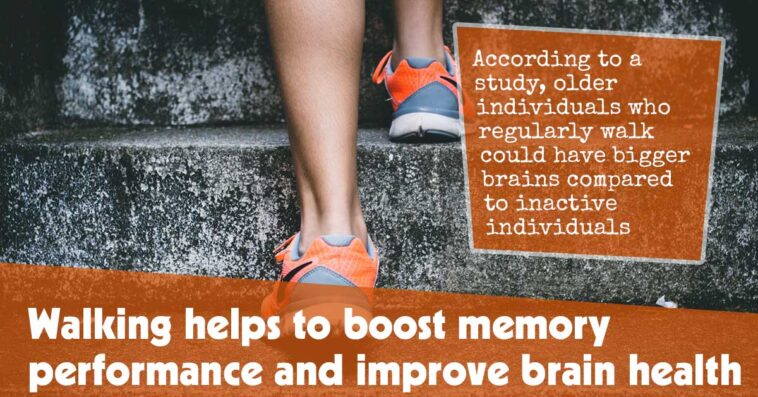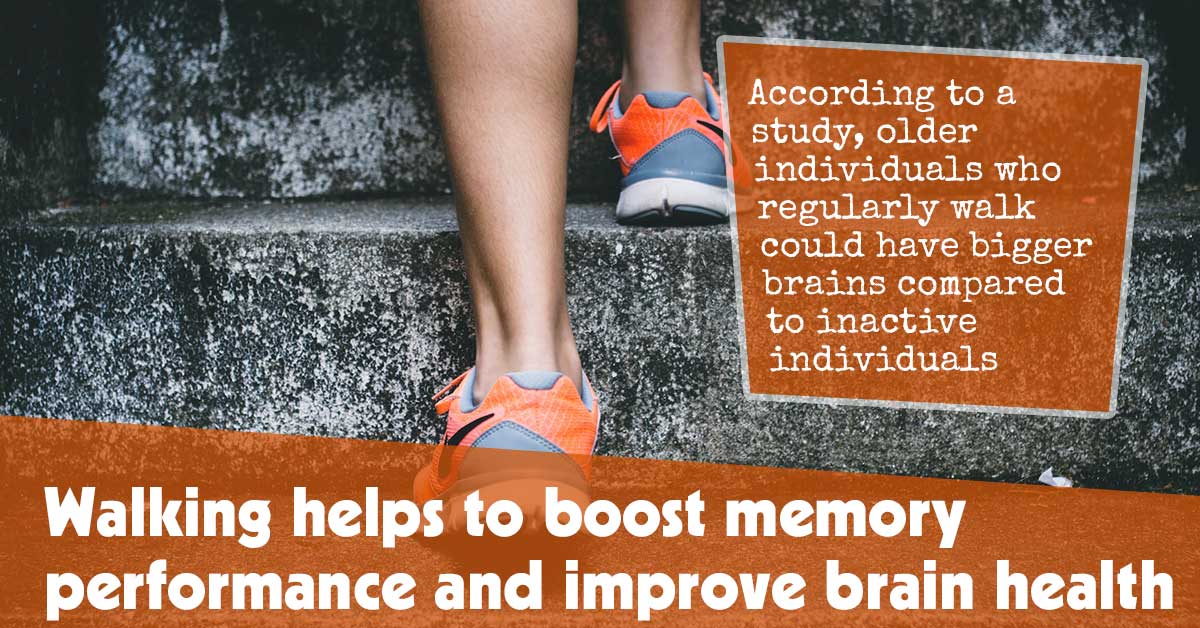Walking can improve memory performance
Researchers have determined that moderate-intensity exercise which includes brisk walking can have the most beneficial impact on memory performance.1✅ JOURNAL REFERENCE
DOI: 10.1016/j.nlm.2019.107128
The results indicate that individuals don’t need to engage in highly strenuous exercise for achieving noticeable long-term memory improvements, as moderate exercise could have a more positive impact.
This research could be significant for developing strategies to protect memory in older age, particularly for the treatment of individuals with memory deficiencies. Exercise guidelines for memory enhancement could also give a boost to students writing exams or even help individuals with daily tasks which include remembering shopping list items.
The researchers concluded that different exercise intensities, or various kinds of rest, could directly affect an individual’s recognition memory test performance.
The study suggests that it isn’t important to overexert oneself to achieve noticeable cognitive improvements. Establishing clear guidelines to enhance memory by way of moderate-intensity exercise such as walking could not only help in supporting memory-deficient individuals, but also be useful for society, workplace, and school initiatives.
Walking improves brain connectivity and memory in older individuals
Another study shows how walking strengthens 3 of the brain network connections, including a network linked to Alzheimer’s disease, adding to the mounting evidence that brain health is improved with exercise.2✅ JOURNAL REFERENCE
DOI: 10.3233/ADR-220062
The study examined the recollection abilities of the brain in older individuals who had normal brain function and individuals with mild cognitive impairment, a decline in mental abilities which includes judgment, reasoning, and memory.
The brain networks examined in this research reveal deterioration over time in individuals with mild cognitive impairment and Alzheimer’s. individuals become disconnected, and they subsequently lose the ability to remember things and think clearly. This research shows that these connections are strengthened with exercise such as walking.
The research builds upon prior research, which demonstrated how walking could improve brain function and reduce cerebral blood flow in older individuals who had mild cognitive impairment.
33 individuals between the ages of 71 and 85 were monitored while walking on a treadmill 4 days every week for 12 weeks. The individuals were asked to read a short story which was then repeated out loud with as much detail as possible before and after the exercise routine.
Functional magnetic resonance imaging was also performed on the individuals so communication changes within and between the 3 brain networks controlling cognitive function could be measured:
The default mode network is connected to the hippocampus, 1 of the 1st brain areas affected by Alzheimer’s, and is activated when an individual isn’t engaged in a specific task such as daydreaming about the grocery list. It’s also where Alzheimer’s disease and amyloid plaques show up in tests.
The frontoparietal network involves memory and regulates decision-making when an individual is completing a task.
The salience network facilitates changing between networks for performance optimization and monitors the external world and stimuli to decide what warrants attention.
The tests were repeated after 12 weeks of walking and significant improvements were seen in individuals’ story recall abilities.
The activity of the brain was more synchronized and stronger, demonstrating that exercise can induce the ability of the brain to adapt and change. The results provide even more hope that exercise such as walking could be useful as a method for preventing or help stabilizing individuals with mild cognitive impairment and perhaps, in the long run, delay the transformation to Alzheimer’s related dementia.
Stronger activity was observed within the default mode as well as the salience network, and also in the connections within the 3 networks.
Walking could prevent brain shrinkage in older adults
According to another study, older individuals who regularly walk could have bigger brains compared to inactive individuals. The exercise effects were equivalent to 4 fewer years of brain aging.
Researchers made use of MRI scans for measuring the brains of individuals with activity levels ranging from inactive to very active. The scans confirmed that less active individuals had smaller brain volumes.
Other studies have demonstrated that the risk of age-related cognitive decline and dementia could be reduced with physical activity. This study made use of brain scans for measuring the brain volumes of individuals and found that individuals engaging in the top 3rd highest physical activity levels had a brain volume equal to 4 years younger in brain aging compared to individuals at the bottom 3rd activity level.
The study included 1,557 dementia-free individuals aged 75 years on average with 296 of them having mild cognitive impairment and 28% having the APOE gene that’s associated with a higher Alzheimer’s risk.
Memory and thinking tests, and also physical exams were given to the individuals and they were asked about their daily tasks as well as other physical activities. How much energy and time each individual allocated to those tasks and activities was then calculated.
The individuals were divided into 3 groups: inactive individuals; somewhat active individuals which meant they either had approximately 2-and-a-half hours of low-intensity physical activity every week, 1-and-a-half hours of moderate physical activity every week, or 1 hour of high-intensity physical activity every week; and the most active individuals which meant they either had 7 hours of low-intensity physical activity every week, 4 hours of moderate physical activity every week or 2 hours of high-intensity physical activity every week.
All of the individuals’ MRI brain scans were then reviewed and it was found that when in comparison to the inactive individuals, the most active individuals had larger total brain volume.
After APOE gene status, sex, age, education, and ethnicity/race was adjusted for, the average brain size for inactive individuals was 871 cubic cm in comparison to 883 cubic cm for the most active individuals, a difference of 12 cubic cm, or 1.4%, or equal to nearly 4 years of brain aging. These results stayed similar even after individuals with mild cognitive impairment were excluded.
The results reinforce the evidence that participating in more physical activity is associated with larger brain volume It also builds on evidence that staying active more often throughout life could help prevent loss of brain volume.
A study limitation was that physical activity information relied on an individual’s ability to remember for how much time and how often they were active. Because of the study design, it doesn’t prove that brain shrinkage is prevented by exercise; it only shows a connection.




